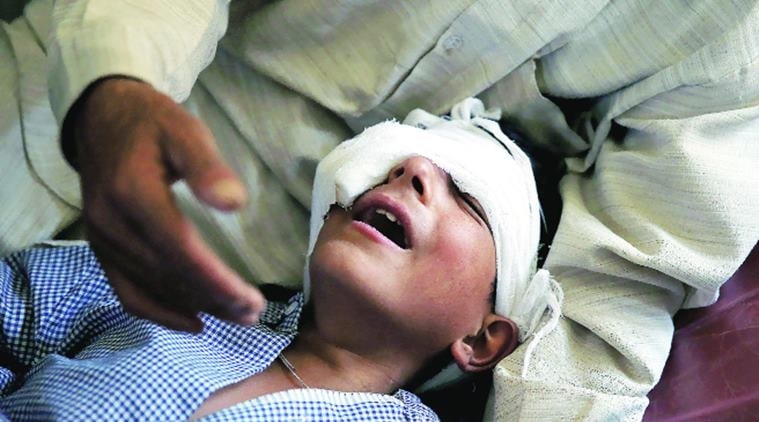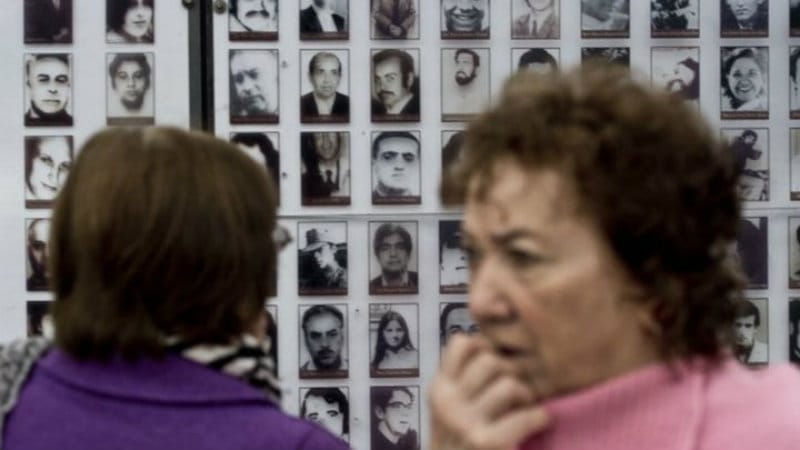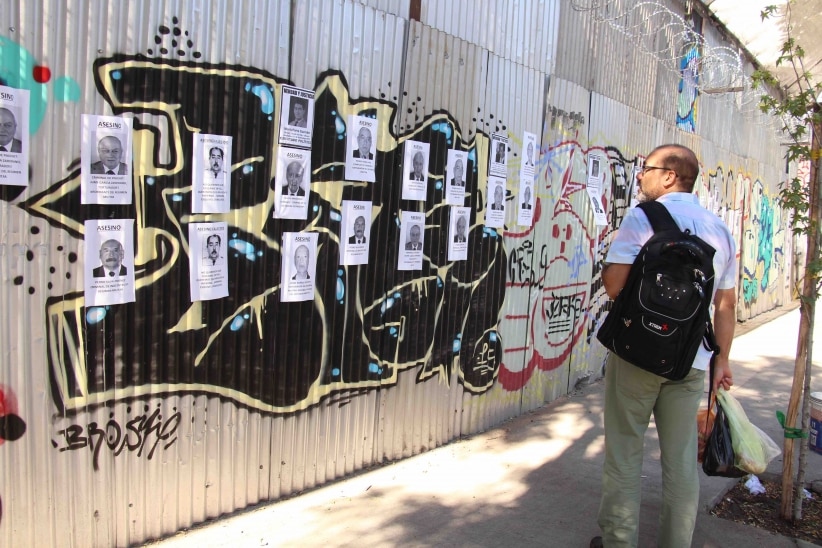
By Zulfiqar Ali
Indian forces have been committing war crimes in occupied Kashmir by deliberately and indiscriminately using pellet guns against civilian population including women and children, irrespective of their age and gender.
In five months, from July to November, at least 14 civilians lost their lives to the deadly pellets, while nearly 1700 people, including children as young as 4 years old, were hit in the eyes with pellets guns.
At least 40 of them have been completely blinded and doctors fear they will never be able to see again and more than 1000 have been partially blinded. Other than eye injuries, thousands other have been wounded by the pellet guns.
Records reveal the most affected age group is between 15-20 years.
In August, India’s paramilitary force Central Reserve Police (CRPF) admitted before a court in Kashmir to have fired nearly 1.7 million pellets at civilians in first 34 days – from July 9 to August 11.
The figures however don’t include ammunition used by the police. It is believed that Indian forces might have fired more than 2 million pellets at civilians in just five months.
India, it seems, wanted to maim, kill or blind every Kashmiri, in order to control them. In theory, the Geneva Conventions should prevent such attacks. Protocol-I to the Geneva Conventions prohibits ‘indiscriminate attacks’ in which the expected civilian harm outweighs the anticipated military advantage of the attack. It other words that cannot distinguish between soldiers and civilians.
Given the lifelong suffering caused by pellet guns, they are clearly not only indiscriminate but also disproportionate.
Under Protocol-I, an attack is a war crime if civilians are intentionally targeted. At the same time, the concept of a war crime includes a situation where the attacker launches an attack that he knows will be disproportionate.
“Pellet guns are inherently inaccurate and indiscriminate,” said Aakar Patel, the Executive Director of Amnesty
International India, in August. He added that their use is “not in line with international standards on use of force.”
In December, the Nobel Peace- Prize -winning US rights group, Physicians for Human Rights (PHR) in its report called pellets ‘indiscriminate, inherently inaccurate and capable of penetrating soft tissues even at a distance’.
The report states that the ordinance factory that manufactures 12-gauge pellet shot guns, has conducted no testing on the safety of the 12-gauge shot gun and that the weapons are produced with little regulatory oversight and accountability.
The report asserted that these types of weapons cause ‘serious injury, disability, and death’, and that it was misleading to call the weapon that were inherently lethal and indiscriminate as ‘less than lethal’.
Pellet guns are used with such little precision that those firing them know they are targeting civilians as there are no military targets. Furthermore, the pellets guns are being used against civilians in Kashmir despite the absence of an imminent threat from the opposite side.
There is, in short, no legal justification for the disproportionate use of inherently indiscriminate weapon against civilians who are protesting Indian occupation. Even if there were a threat, there would be no reason to use a weapon which can harm civilians. Pellet is a ‘statistics weapon,’ not a ‘precision weapon’.
Mehbooba Mufti, the Chief Minister of Indian occupied Kashmir, when asked about the use of pellet guns against children, said those hit by bullets or pellets “had not gone to fetch milk or toffees”.
Only a day after Home Minister Rajnath Singh concluded his two-day Kashmir visit in July, the CRPF director general K Durga Prasad, who seemed to be encouraged by Kashmir chief minister’s statement, said that though he “felt sorry” for injuries caused to people by use of pellet guns, the force would continue to use it in the Valley.
Prasad said there was no such thing as a “non-lethal weapon” – the state government describes pellet ammunition as such – and maintained that the pellet guns were the “least lethal” option available with them.
A day later, the CRPF said it would continue to use the pellet gun in the valley.
On July 26, an Indian army general said that these weapons were the ‘least lethal’ option available.
“There is a requirement for non-lethal weaponry such as pellet guns,” Lieutenant General DS Hooda said.
And then, on August 6, India’s official news agency reported that there will be no blanket ban on pellet guns in Kashmir, though it may be used rarely.
‘The expert panel, set up by the Home Ministry to find an alternative to pellet guns, is believed to have zeroed in on ‘PAVA shells’ which is less lethal and immobilises the target temporarily…. Pellet guns are, however, unlikely to be completely banned but will be fired in rarest of rare cases,’ the Press Trust of India (PTI) said in its report.
On August 10, the CRPF director-general made it clear that there was no ban on pellet guns. He also went on to say that he was not under any pressure from the Central government to stop the use of such guns, comparing use of pellet guns in Kashmir to ‘wife beating’.
On September 6, in its objections to the Bar PIL – while justifying use of pellet gun in quelling protests – the Indian government in occupied Kashmir stated that “pellet gun was a modern method to deal with crowd.”
On Sept 9, the CRPF told a high court “if pellet guns are banned, its personnel will be forced to fire bullets in extreme situations, which can cause more fatalities.”
On Sept 11, Indian minister of State for External Affairs V.K. Singh, also a former army chief, described pellet firing as ‘non-lethal’ and said it was a “sensible and well-thought” decision by the Union Home Ministry to use the weapon for controlling protesting crowds in the Kashmir Valley.
On Sept 22, the high court dismissed the petition against use of pellet guns after Indian state opposed ban of pellet guns.
Early this year, on Jan 8, the paramilitary force refused to disclose information about the use of pellet guns during the five-month uprising, saying “it is not related to human rights violations.’
It means Indian forces don’t consider killing, maiming and blinding people by lethal weapon as human rights violations.
Despite international outcry, the Indian government has not banned pellet guns in Kashmir and has chosen pellet guns as its most preferred weapon to control people in Kashmir.
The number of fatalities and injuries declined after November because there were fewer protests, not because India has stopped using live bullets or pellets.
These statements of Indian officials provide enough evidences that India is willfully targeting civilians in Kashmir with indiscriminate weapons which constitutes a War Crime.
The author/writer has been mainly associated with the BBC for nearly 20 years, and a recipient of the BBC’s Global News Award 2012 of best reporting in the West and Central Asia. He has also worked as a stringer for ‘Reuters’ news agency, the French news agency ‘AFP’, and has written on Kashmir politics for the Pakistani English language monthly magazine, Herald. He has covered all aspects of Kashmir conflict.
________
Note: The statistics about the use of pellet guns in Kashmir are based on information provided to Venjatesh Nayak, noted RTI activist and Programme Coordinator at Commonwealth Human rights Initiative, from the CRPF headquarters.






